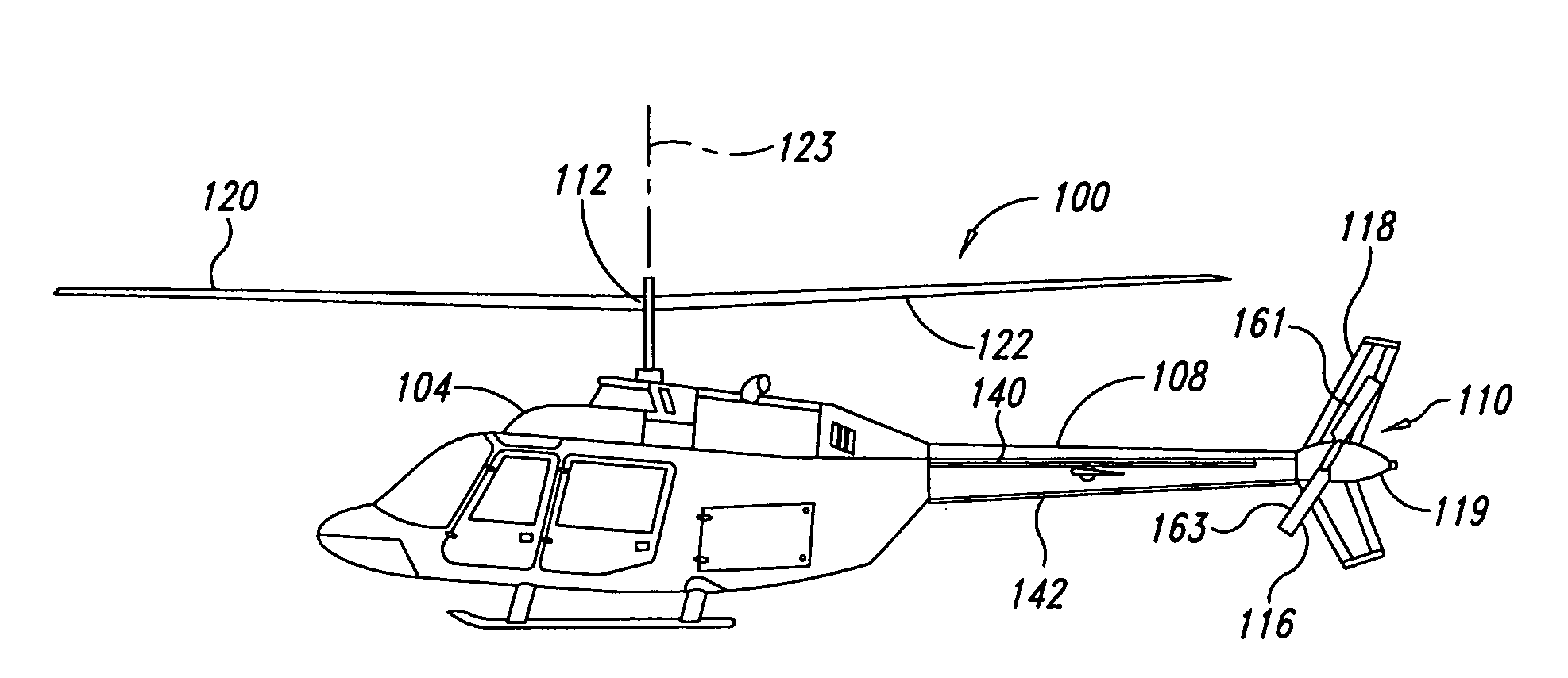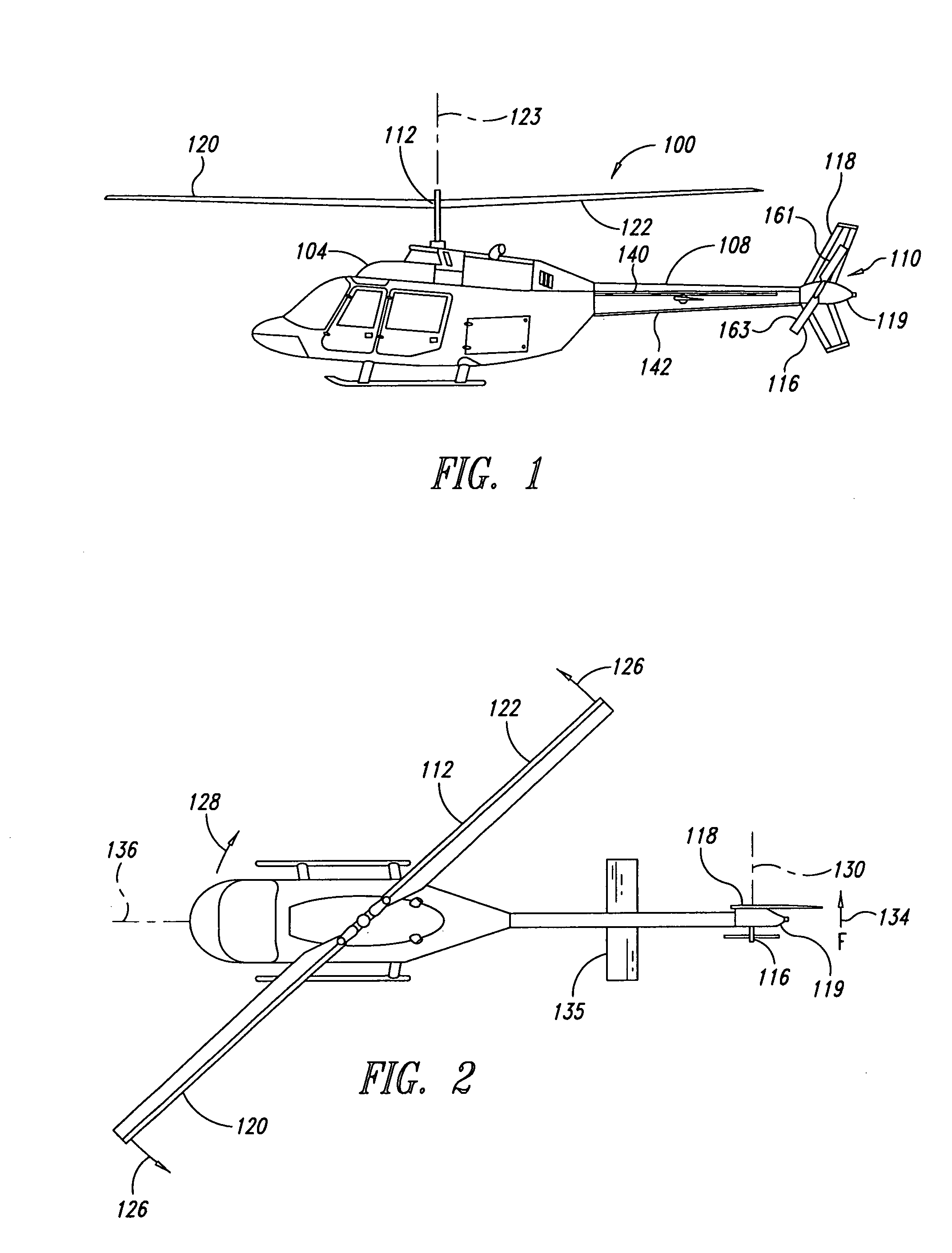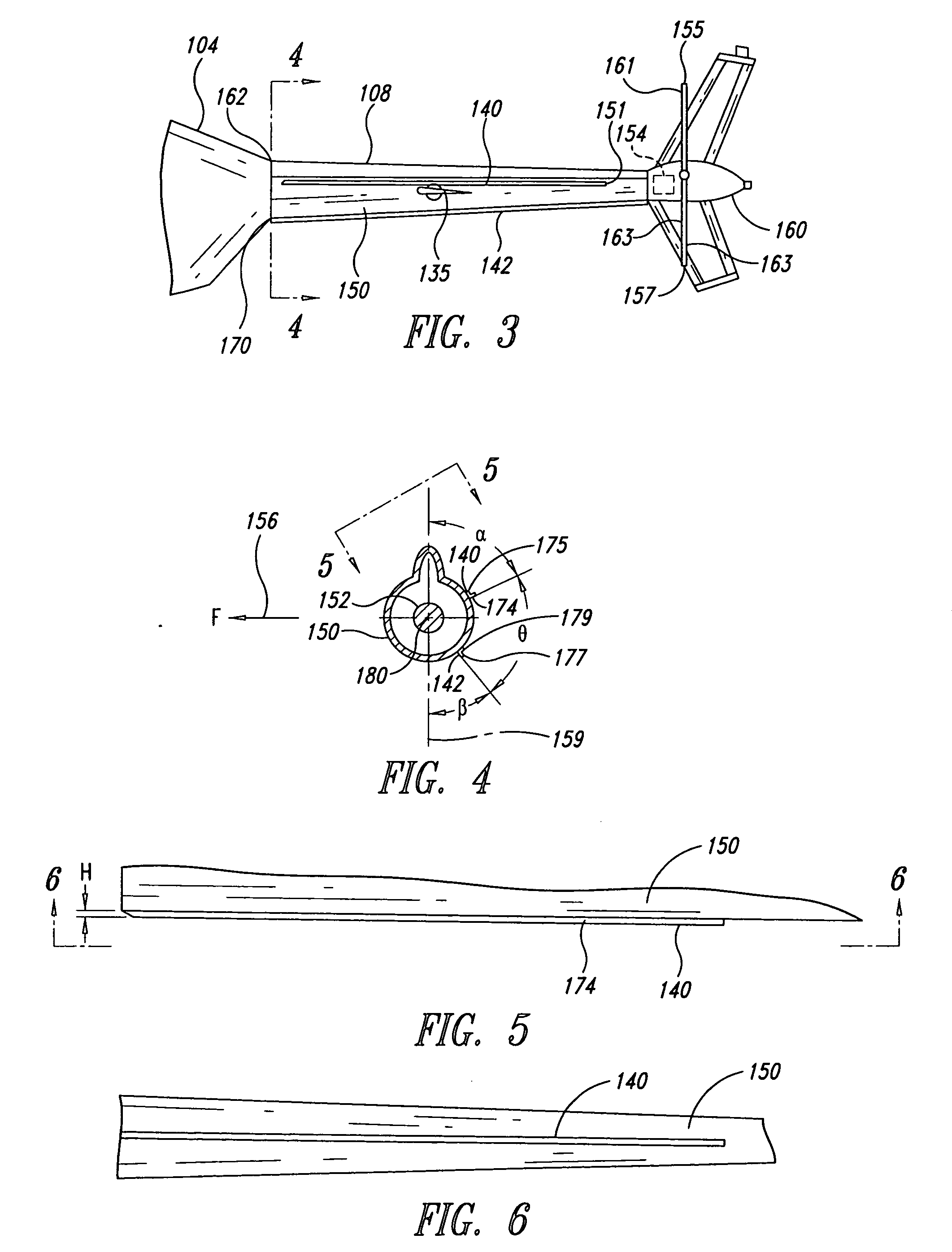Aircraft stabilizer system and methods of using the same
a stabilizer and helicopter technology, applied in the field of helicopters, can solve the problems of reducing the performance and efficiency of the helicopter, reducing the thrust force, and difficulty in maintaining the proper heading of the helicopter, and achieve the effects of improving performance, large thrust force, and small profil
- Summary
- Abstract
- Description
- Claims
- Application Information
AI Technical Summary
Benefits of technology
Problems solved by technology
Method used
Image
Examples
Embodiment Construction
[0043]In the following description, certain specific details are set forth in order to provide a thorough understanding of various embodiments of the invention. However, one skilled in the art will understand that the invention may be practiced without these details. Stabilizing systems are disclosed in the context of tail sections of helicopters because they have particular utility in this context. However, the stabilizing systems can be incorporated into other types of aircraft in which aerodynamics is a significant consideration. Terms, such as “rear,”“front,”“rearward,”“forward,”“counter clockwise,”“clockwise,”“upward,” and “downward,” and variations thereof are used to describe the illustrated embodiments and are used consistently with the description of non-limiting exemplary applications. It will be appreciated, however, that the illustrated embodiments can be located or oriented in a variety of desired positions.
[0044]Unless the context requires otherwise, throughout the spe...
PUM
| Property | Measurement | Unit |
|---|---|---|
| angle | aaaaa | aaaaa |
| angle | aaaaa | aaaaa |
| angle | aaaaa | aaaaa |
Abstract
Description
Claims
Application Information
 Login to View More
Login to View More - R&D
- Intellectual Property
- Life Sciences
- Materials
- Tech Scout
- Unparalleled Data Quality
- Higher Quality Content
- 60% Fewer Hallucinations
Browse by: Latest US Patents, China's latest patents, Technical Efficacy Thesaurus, Application Domain, Technology Topic, Popular Technical Reports.
© 2025 PatSnap. All rights reserved.Legal|Privacy policy|Modern Slavery Act Transparency Statement|Sitemap|About US| Contact US: help@patsnap.com



